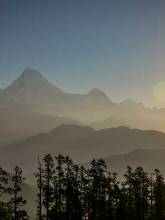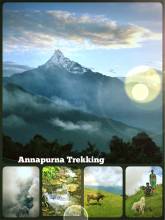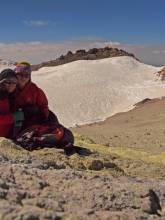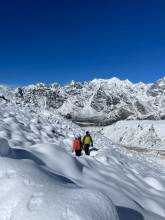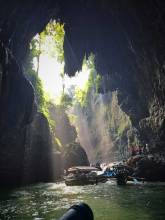All About the Everest Base Camp Trek: A Journey to the Top of the World
Nestled amidst the towering peaks of the Himalayas, the Everest Base Camp Trek stands as an iconic pilgrimage for trekkers and adventurers from around the globe. This extraordinary journey promises not only breathtaking vistas but also a profound cultural experience. In this article, we will delve into the various facets of the Everest Base Camp Trek, covering everything from its rich history to the logistics of undertaking this challenging yet rewarding expedition.

The Historical Significance
The Everest Base Camp Trek traces its roots back to the early 20th century when Nepal opened its doors to foreign trekkers. However, the true surge in popularity came in 1953 when Sir Edmund Hillary of New Zealand
opened its doors to foreign trekkers. However, the true surge in popularity came in 1953 when Sir Edmund Hillary of New Zealand and Tenzing Norgay, a Sherpa of Nepal, successfully summited Mount Everest. Their historic accomplishment brought global attention to the region, and since then, the Everest Base Camp Trek has become a mecca for those seeking adventure and a taste of the world's highest peak.
and Tenzing Norgay, a Sherpa of Nepal, successfully summited Mount Everest. Their historic accomplishment brought global attention to the region, and since then, the Everest Base Camp Trek has become a mecca for those seeking adventure and a taste of the world's highest peak.
Kathmandu
The journey begins in the bustling city of Kathmandu, the capital of Nepal. Spend a day acclimating to the vibrant atmosphere, exploring ancient temples like Swayambhunath and Boudhanath, and obtaining necessary permits for the trek. It's also a good time to meet your guide and fellow trekkers.
Take a plane to Lukla and walk to Phakding
A thrilling flight takes you to Lukla, a small airstrip perched on a mountainside. The trek officially kicks off as you make your way to Phakding, a quaint village along the Dudh Koshi River. The trail offers a gentle introduction to the Himalayan terrain.
Acclimatization in Namche Bazaar
The path leads to Namche Bazaar, a vibrant Sherpa town that serves as a crucial acclimatisation point. Explore the local markets, visit the Sherpa Culture Museum, and take short hikes to higher altitudes. It is imperative to acclimate in order to avoid altitude sickness.
Tengboche and Dingboche
Continue the ascent to Tengboche, home to the renowned Tengboche Monastery. The journey then proceeds to Dingboche, where the landscape changes, and the air gets thinner. The views of Everest, Lhotse, and Ama Dablam become increasingly awe-inspiring.
Lobuche and Everest Base Camp
The trail takes you through Lobuche to Gorak Shep, the final settlement before Everest Base Camp. The journey culminates in reaching the base of the world's highest peak, an experience that transcends words. The Khumbu Glacier and the towering Everest create an awe-inspiring panorama.
Kala Patthar and Descent
For a stunning panoramic view of Everest, wake up early to climb Kala Patthar. The sunrise illuminates the surrounding peaks, offering a breathtaking spectacle. Descend to Pheriche and continue back to Namche Bazaar. The descent allows trekkers to appreciate the landscape from a different perspective.
Return to Lukla and Departure
The final leg involves retracing your steps back to Lukla. Take a moment to reflect on the incredible journey before flying back to Kathmandu. Spend the last day exploring the city or shopping for souvenirs before departing.

Challenges and Preparations
The trek to Everest Base Camp is not without its difficulties. The high altitude, unpredictable weather, and rugged terrain demand physical fitness and mental resilience. It is essential to have enough physical and mental preparation. Building the required stamina can be facilitated by weight training, altitude simulation exercises, and regular aerobic workouts.
Best Time to Embark on the Journey
While the Everest Base Camp Trek is feasible throughout the year, the ideal times are spring (March to May) and autumn (September to November). During these seasons, the weather is relatively stable, and the skies are clear, offering the best views of the surrounding peaks.
Cultural Encounters
Beyond the physical challenges and breathtaking landscapes, the Everest Base Camp Trek provides a unique opportunity for cultural immersion. The Sherpa people, known for their warmth and hospitality, welcome trekkers into their villages. Visits to ancient monasteries, prayer flag-lined trails, and encounters with yaks carrying supplies add a rich cultural dimension to the trek.
Conclusion
The Everest Base Camp Trek is not just a physical journey; it's a spiritual and cultural odyssey that leaves an indelible mark on those who undertake it. From the historical significance of the region to the challenges faced on the trail, every aspect contributes to the allure of this iconic trek. As you stand at the base of Mount Everest, surrounded by some of the world's highest peaks, the sense of achievement and awe is unparalleled. So, lace up your boots, prepare for an adventure of a lifetime, and set forth on the trail to the top of the world.







